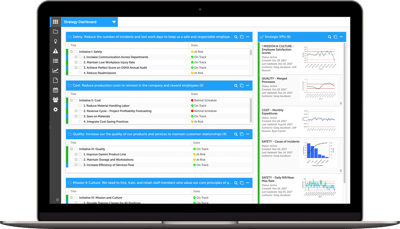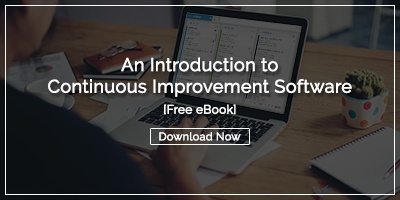 Organizations that adopt the continuous improvement approach to business management have many tools and techniques at their disposal. Some organizations leverage these instruments as part of a structured business methodology such as Lean, Six Sigma, or Toyota Kata, while others take advantage of them independently. Improvement management software supports them all in various ways and creates a unified platform for all types of improvement work.
Organizations that adopt the continuous improvement approach to business management have many tools and techniques at their disposal. Some organizations leverage these instruments as part of a structured business methodology such as Lean, Six Sigma, or Toyota Kata, while others take advantage of them independently. Improvement management software supports them all in various ways and creates a unified platform for all types of improvement work.
PDSA and DMAIC
PDSA (Plan, Do, Study, and Act) and DMAIC (Define, Measure, Analyze, Improve, and Control) are variations of a continuous improvement cycle. Each ensures orderly and effective change. Improvement software is used by organizations to document each element of the process, notify staff when action is required, and measure the improvement's impact.
Standard Work
Improvement software supports Standard Work in many ways. Developing the Standard is lotted as an improvement, ensuring that all of the relevant team members and stakeholders are involved. It also creates a repository for the current Standard. When the Standard needs further improvement, the cycle begins again.
Kaizen (Rapid Improvement) Events
An improvement platform helps ensure success by providing a unified source for all in progress and planned work. Relevant files are stored, tasks are assigned, and progress is measured all in one easily accessible solution. The best solutions push out notifications and alerts that help maintain momentum and structure collaboration. This is especially important if the issue requires cross-functional cooperation. It is expected that participants will discover new opportunities for improvement during an improvement event. Quality management software captures them for future projects.
Gemba Walks
The idea behind a Gemba walk is to visit the place where work happens, show respect for people, and look for opportunities for improvement. Improvements are not made during the walk, only after the walk is over, and the thoughtful analysis occurs. Improvement software is the home for each potential improvement. It structures the process for implementing the selected opportunities.
Value Stream Mapping (VSM)
Value stream mapping contrasts the current state of a process with a perfect condition in which value is maximized, and waste is eliminated. Software that only digitizes the map doesn't go far enough to support the underlying goal of improvement. Instead, the focus should be on features that help document, accelerate, and measure the results of improvement opportunities.
Catchball
The Lean technique of Catchball involves moving ideas and data from one person or team to another, just like the game of catch from childhood but with improvement ideas, rather than balls. It is the basis for complex decision making and policy development. Email is an ineffective tool for catchball because it is so easy for messages to be missed and context to be lost. Improvement software is an ideal tool for this kind of back and forth collaboration.

Daily Huddle Meetings
Daily huddles are a common practice in organizations dedicated to continuous improvement. Teams assemble around a huddle board to discuss projects and work through problems. Improvement management software digitizes the huddle board, making it possible for people to participate from anywhere, capturing the history of improvement work and helping executives stay on top of the improvement work of all the teams they oversee.
Kanban
Kanban is a technique used to visualize workflow and find any interruptions in the flow before a backlog forms or grows too big. Digital Kanban boards serve to make it obvious when and where work is getting delayed. Armed with this insight, managers can take the proper steps to solve any problems.

Hoshin Kanri
Hoshin Kanri is a strategy development methodology that involves identifying a few breakthrough objectives achieved in 3-5 years. Software bolsters Hoshin planning by aligning each person's goals with the overarching strategy in the tool they use for daily improvement work. This keeps the strategy top of mind for managers and staff.
You don't have to use improvement management technology to utilize any of these tools and techniques, but doing so makes all of the more efficient and effective. With the right technology in place, your team will become more engaged, make better decisions, and enjoy the benefits of structured, positive change.



Add a Comment